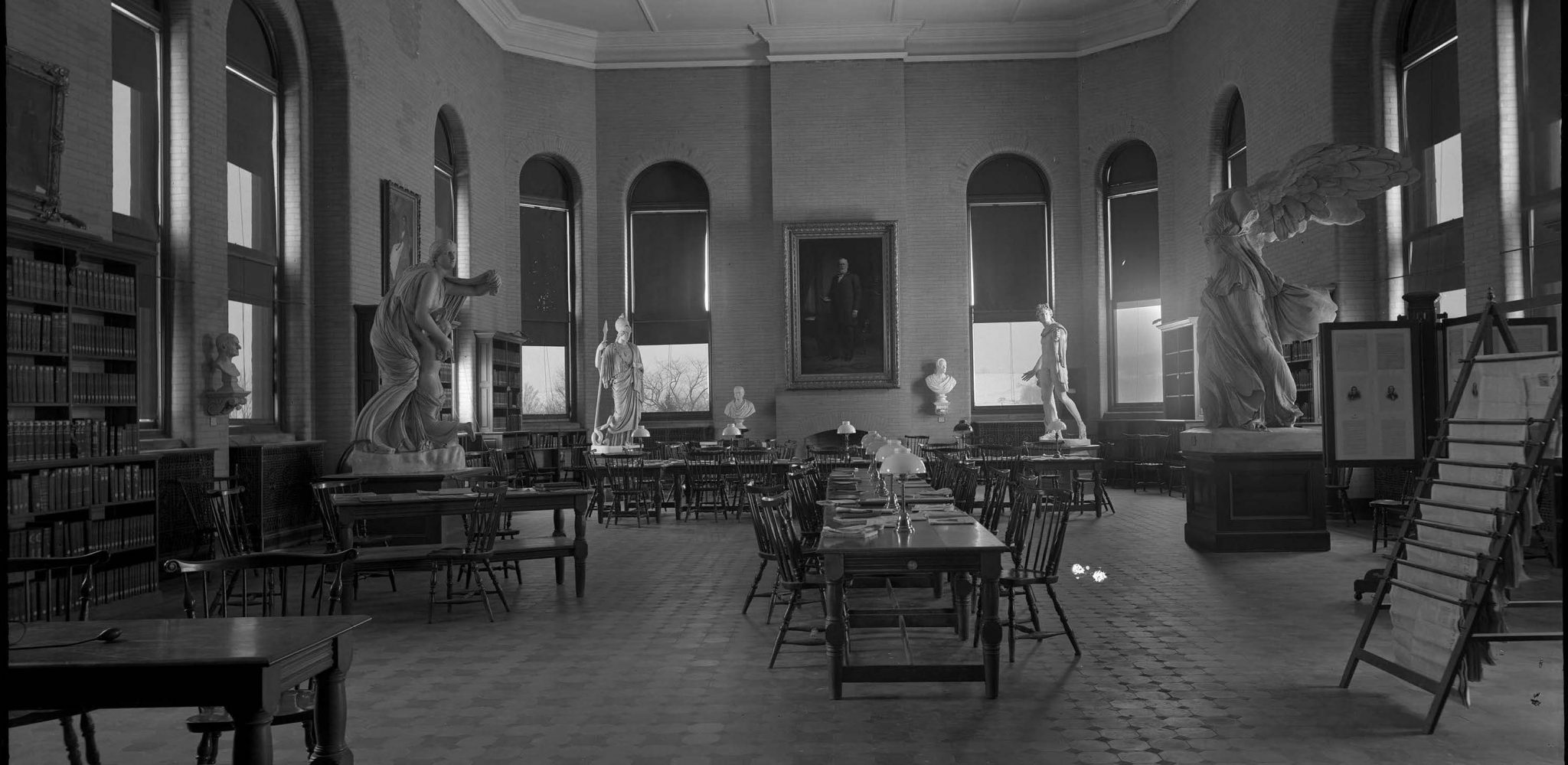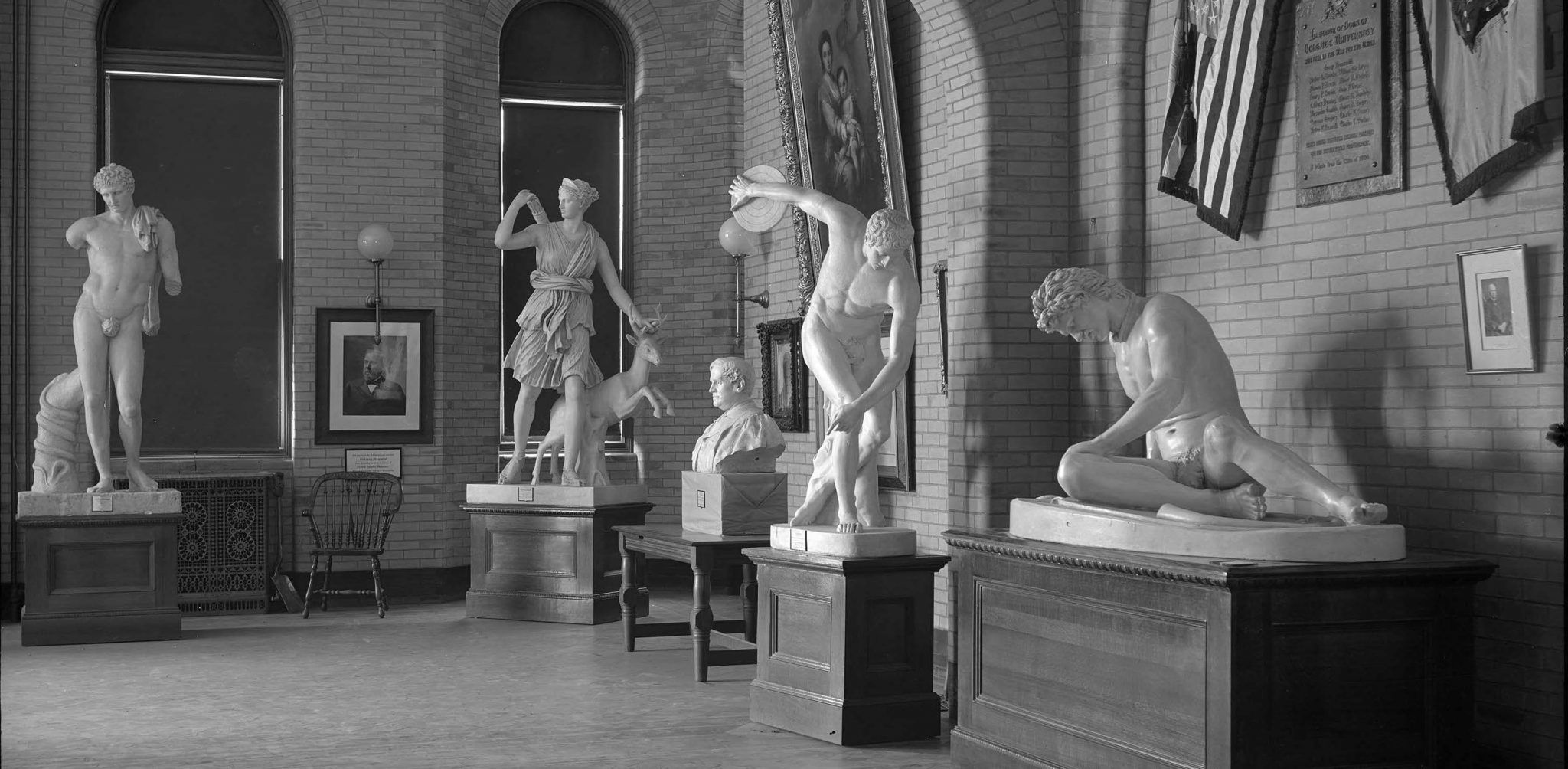The Plaster Cast Collection
Colgate’s collection of plaster casts represents an important chapter in the history of the Classics at the university. A plaster cast is primarily a teaching tool. Molds, taken from original Greek and Roman sculptures held in the collections of European museums, were used to cast one-to-one replicas in plaster. In the later part of the nineteenth century, this inexpensive process of serial-reproduction made access to Greek art affordable for middle-class Americans who did not have the financial means to travel to Europe to see the originals. Professor Newton Lloyd Andrews introduced Greek Art to the curriculum of the Classics department in 1873 and was a prominent figure in the development of the university’s collection. For the teaching of Greek art and archaeology, the collection of casts was as important as a laboratory for the physical sciences.
A significant donation of sixteen casts was made in honor of Trustee George L. Stedman in the early 1900s. The casts were purchased from P.P. Caproni and Brother of Boston, the main supplier of plaster casts to universities and museums. The casts of The Stedman Memorial were displayed in the newly constructed J.B. Colgate Library, where they were carefully arranged to convey symbolic messages. Photographs of the main reading room of the library show that a portrait of Colgate’s benefactor, James B. Colgate, is placed front and center. A portrait bust of Nathaniel Kendrick, the first president of the university flanks the right side of James B. Colgate, while the marble bust of Walter Brooks, beloved minister of Hamilton’s First Baptist Church and instructor at Colgate in the late nineteenth century, flanks his left. Brooks speaks to the theological roots of the university and the Baptist faith’s ongoing relevance at the turn of the twentieth century. A cast of the Apollo Belvedere, once viewed as the perfected portrait of noble male beauty, stands next to Nathaniel Kendrick. Placed next to the first president of the university, Apollo’s image evokes the idea of youthful intellect taking shape and attaining ideal manhood at Colgate. To the left of Brooks is the Athena Giustiniani, a symbol of wisdom. Here she emphasizes the wisdom acquired through the study of theology. In short, the tableau of portraits and plaster casts in the main reading room of the J. B. Colgate Library expresses visually the university’s motto, Deo ac Veritati, For God and Truth.
The Stedman Memorial Given by widow and sons in honor of
George L. Stedman, Trustee and Friend of Colgate University
Gift of Class of 1882
Discobolus
Gift of Class of 1894
Homer
Gift of Class of 1895
Virgil
Alumni Association of Albany and Troy
Apoxymenos
Praying Boy
Athena Giustiniani
Apollo Belvedere
Niobe and Daughter
Nike of Samothrace
Dying Gaul
Resting Boxer
Artemis of Versailles
Artemis of Gabii
Hermes of Andros
Aphrodite of Melos
Wrestlers
Laocoon
Anacreon
Antinous
Amazon
Satyr by Praxiteles


